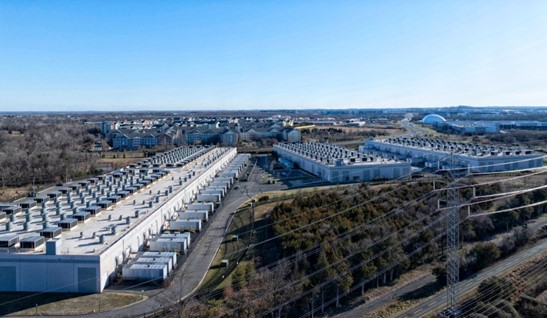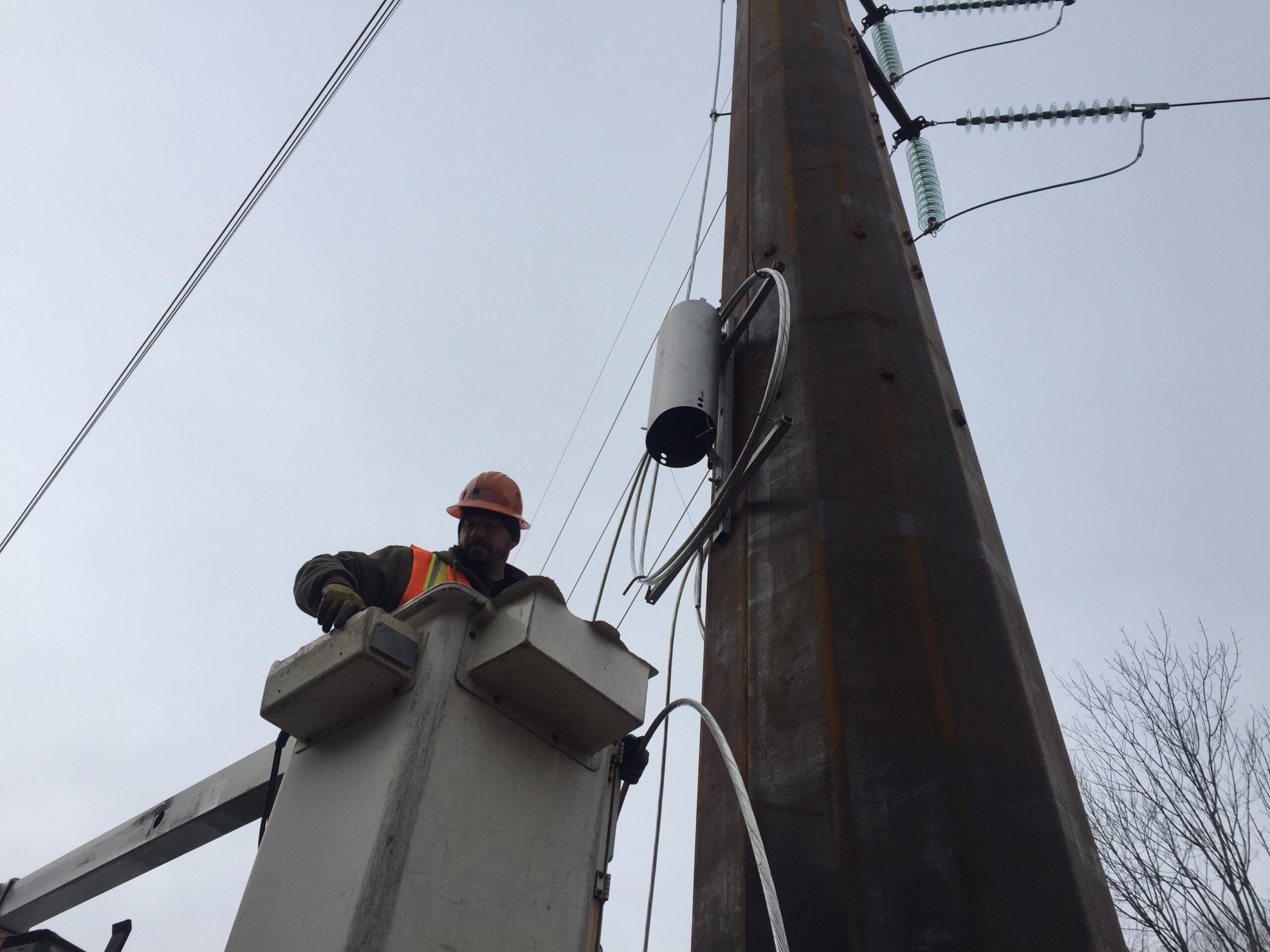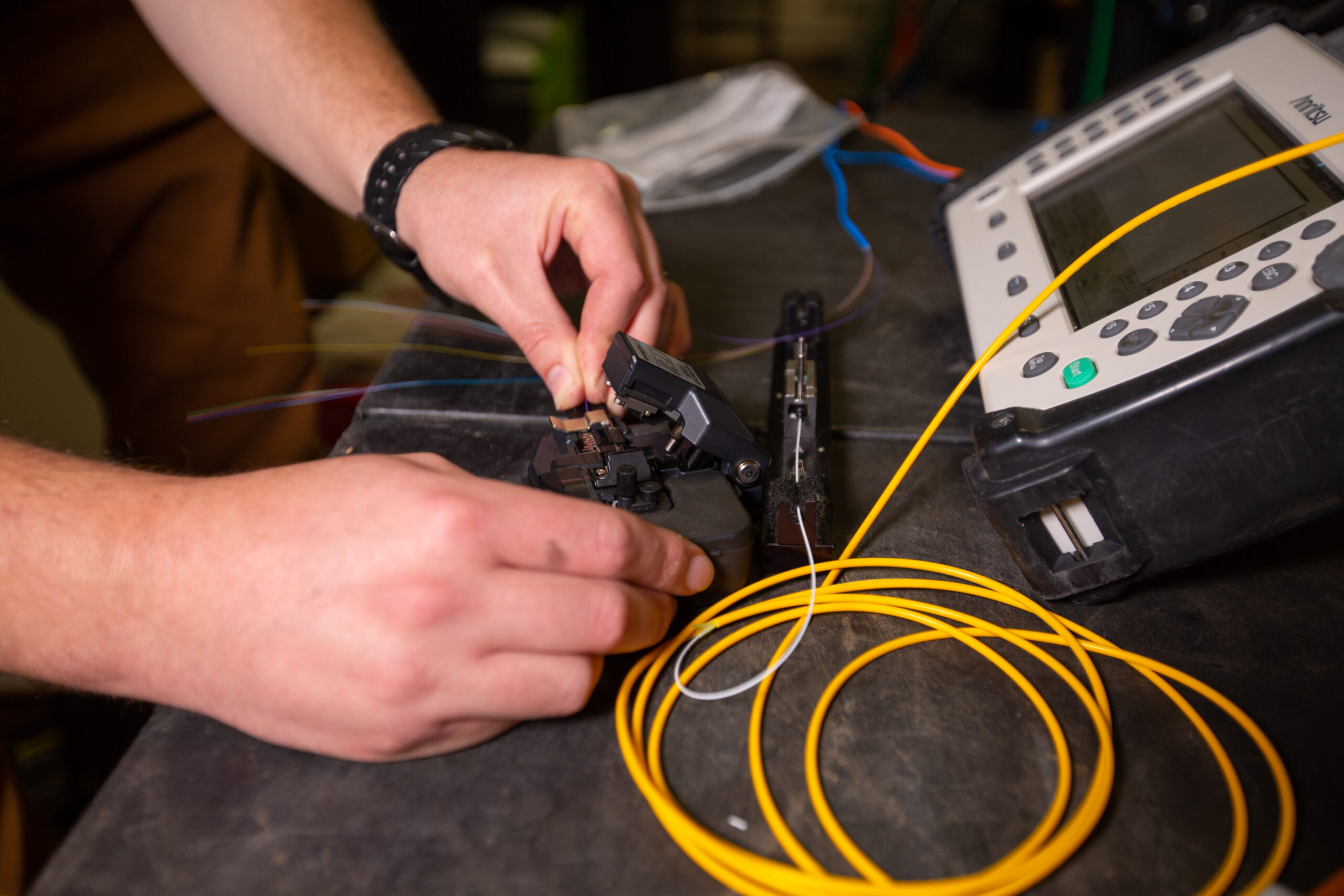Why Northern Virginia Data Centers Need 400G/800G Now
Northern Virginia's Ashburn and Loudoun County region, known as "Data Center Alley", hosts over 70% of the world's internet traffic. With AI, cloud computing, and hyperscale operations expanding at a rapid pace, bandwidth needs are climbing fast.
The move from 100G to 400G/800G isn’t a straight upgrade path. It often requires rethinking fiber plant readiness, redesigning networks, retraining teams, and justifying higher costs against actual traffic demand. For many operators, the transition is more stepwise (100G to 200G/400G for core/backbone first, then onto 800G for hyperscale data centers) rather than a smooth universal migration.
Why This Region Leads Global Data Center Growth
Ashburn’s unique location just outside Washington, D.C., combined with Loudoun County’s pro-business environment, has positioned the region as the world’s largest data center hub. Its success is rooted in several strategic advantages: proximity to MAE-East, the original internet exchange point; access to a resilient power grid with multiple utility providers and substations; a dense fiber network with abundant dark fiber; and favorable local policies that include zoning and tax incentives.
These factors are fueling the explosive growth for the region and as AI continues to rapidly transform the digital landscape, the U.S. is expected to see at least a 3x increase in hyperscale data center capacity by 2029.
That is why for many facilities still operating on older 10G, 40G, or 100G networks, it is critical to upgrade in order to ensure market share growth is captured and maintained. In short, this demand for higher speeds would require a 2x increase in fiber route miles and a 2.3x increase in total fiber miles for data centers to remain competitive.
This checklist will guide Ashburn and Loudoun County operators through how to plan, design, and deploy their upgrades successfully.
Pre-Upgrade Assessment Checklist
Before investing in a major network upgrade, it’s critical to know exactly what you’re working with and what challenges may stand in the way. A Pre-Upgrade Assessment Checklist helps to avoid costly surprises by ensuring every component is evaluated before anything is deployed. From verifying existing fiber health and capacity, to reviewing power and cooling systems, to checking compliance with zoning or industry standards, a structured checklist reduces risk, streamlines project timelines, and ensures upgrades deliver on performance expectations. In short, it’s the foundation for a smoother, more reliable transition to next-generation speeds. Your Pre-Upgrade Assessment should include:
Fiber Plant Review
- Document current fiber types (OM3, OM4, OM5, OS2)
- Map fiber counts and utilization
- Spot bottlenecks in the cable plant
- Assess patch panel and cassette compatibility
Power and Cooling
- Calculate additional power requirements (400G ports use ~12W; 800G ports use ~18W)
- Verify cooling capacity for higher-density optics
- Improve airflow management
Space Planning
- Confirm rack space for new switches and panels
- Plan cable management for denser connections
- Consider future expansion
Network Architecture
- Review spine-leaf topology
- Plan migration plan with minimal service disruption
- Analyze current and future traffic patterns
Implementation Checklist
A network upgrade is only as successful as the plan behind it. That’s why having a sound implementation checklist is essential. It ensures that every stage of the process, from early planning to final optimization, is executed with precision and accountability. Without a structured roadmap, projects risk delays, unexpected costs, or performance gaps that can undermine the investment.
A well-crafted checklist brings order to complexity, aligning stakeholders, timelines, and technical requirements so nothing falls through the cracks. The checklist provides a step-by-step guide to reducing risk and maximizing ROI, covering everything from defining bandwidth needs and securing permits to testing fiber performance. It also ensures next-generation switches are deployed smoothly and service migrations are carefully managed. Ultimately, it transforms a challenging technical transition into a clear, manageable process. Consider the following phases as a implementation checklist structure as you prepare to upgrade your network.
Phase 1: Planning and Design (Weeks 1-4)
Phase 1 sets the foundation for a successful upgrade by focusing on thorough planning and design. It is recommended the following be executed during Phase 1:
- Define bandwidth needs and budget. Engage with Celerity for professional assessment.
- Design detailed network diagrams and cable routes.
- Choose vendors and verify compliance with industry standards.
- Finalize project timeline and secure permits. Make sure to schedule your installation resources.
Phase 2: Infrastructure Preparation (Weeks 5-8)
Phase 2 focuses on preparing the physical infrastructure to support the upgrade. It is recommended the following be executed during Phase 2:
- Install fiber optic panels, MTP/MPO trunk cables, and cable management.
- Upgrade power and cooling systems.
- Test fiber for insertion and return loss.
Phase 3: Equipment Installation (Weeks 9-12)
Phase 3 is where the core technology comes online. It is recommended the following be executed during Phase 3:
- Deploy 400G/800G capable switches and optics.
- Configure network protocols and routing.
- Test backups and monitor performance
Phase 4: Migration and Optimization (Weeks 13-16)
Phase 4 ensures a smooth transition to the upgraded network. It is recommended the following be executed during Phase 4:
- Migrate services in phases to limit downtime.
- Monitor traffic and balance loads.
- Implement quality of service policies and train staff on new systems.
Troubleshooting Common Upgrade Challenges
Troubleshooting common upgrade challenges is critical for ensuring a seamless transition to higher-speed networks and avoiding costly downtime or performance issues. One of the most frequent hurdles involves power and cooling. New equipment often demands more power than existing systems can provide, which can be addressed by upgrading power distribution infrastructure or exploring advanced solutions like liquid cooling to efficiently handle higher loads. Overheating racks are another common concern, particularly in dense data center environments, and can be mitigated by improving airflow, reorganizing rack layouts, or implementing immersion cooling techniques that better manage heat.
Fiber connectivity is another area where challenges frequently arise. Mismatched fiber types or incompatible connectors can lead to signal degradation and network instability, making it essential to standardize on high-performance fiber options such as OM4, OM5, or OS2. Additionally, many upgrades require parallel optics, and having too few fibers to support these configurations can severely limit network capacity. This issue can be addressed by deploying MTP/MPO trunk cables with breakout options, ensuring that the network has the necessary pathways for current and future bandwidth demands. By proactively addressing both power and cooling limitations as well as fiber connectivity issues, organizations can reduce risks, maintain optimal performance, and keep their upgrade projects on schedule.
Critical Success Factors for Ashburn & Loudoun Deployments
Successful deployments in Ashburn and Loudoun depend on navigating a few critical success factors. Regulatory compliance plays a central role, requiring alignment with Loudoun County zoning laws, Virginia’s environmental regulations, and federal security standards. Utility coordination is equally important, particularly when working for power upgrades and local fiber providers to ensure redundancy.
Beyond these fundamentals, best practices help keep projects on track: involving all stakeholders early in the planning process, rolling out upgrades in phases to minimize risk, validating performance through comprehensive testing, and maintaining detailed records to support both compliance and future upgrades. Together, these measures create a framework for efficient, reliable, and scalable deployments in the region.
Maintenance and Ongoing Optimization
Effective maintenance is crucial for keeping data center networks running smoothly and reliably. Ongoing optimization ensures that performance remains high, and resources are used efficiently. Together, these practices allow networks to scale effectively and meet evolving business and technology demands.
On a monthly basis, teams carefully monitor optical power levels, error rates, and cooling system performance to ensure that all components are functioning within optimal parameters. They also review capacity utilization and analyze growth trends, identifying potential bottlenecks or areas where additional resources may be needed. This proactive monitoring allows teams to anticipate future needs, address issues before they impact operations, and maintain consistent, high-performance network reliability.
On a quarterly basis, teams undertake more in-depth activities to ensure the network remains robust and efficient. This includes testing fiber links to verify signal integrity and identify any degradation, updating firmware and software to maintain security, stability, and operational efficiency, and analyzing traffic patterns to optimize load balancing and enhance overall network performance. By performing these comprehensive checks and adjustments, organizations can prevent potential issues, improve reliability, and ensure the network continues to meet growing performance demands.
On an annual basis, organizations perform comprehensive infrastructure audits to assess the overall health and efficiency of their networks, identifying areas for improvement or potential vulnerabilities. They also develop detailed plans for capacity expansion, ensuring that the network can accommodate future growth and increasing demand. Additionally, teams evaluate emerging technologies and industry trends that could enhance performance, improve resilience, or deliver cost efficiencies, positioning the organization to stay ahead in a rapidly evolving digital landscape.
By following this structured approach, data centers not only maintain reliable operations but also position themselves to adapt to technological advances and increasing bandwidth demands over time.
For Ashburn and Loudoun data centers, upgrading fiber infrastructure is no longer optional, it's essential. The winners in this market will be those who plan carefully, roll out upgrades in stages, and keep optimizing over time.
Celerity: Trusted Partner in the Mid-Atlantic For Fiber Upgrades
At Celerity, based in Quakertown, PA, we specialize in providing a full readiness assessment. Our certified fiber optic engineers specialize in data center deployments and can guide you through every stage. With deep technical expertise, local knowledge, and a strong safety culture, we help data centers ensure their networks meet performance requirements, comply with contracts and standards, and are ready for upgrades. Don't let outdated infrastructure slow you down. The future of high-speed connectivity starts with your next decision. Celerity’s experts are ready to partner with you. Contact us today for a consultation.



